In the footsteps of the exhibition Eurosatory 2016: trends in the development of armored vehicles. Part of 6
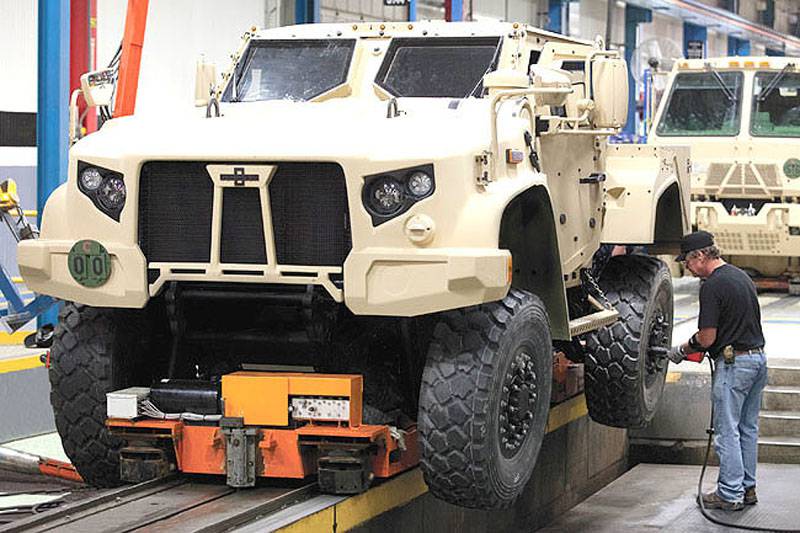
JLTV armored car assembly line by Oshkosh Defense. Full-scale production for the US Army and Marine Corps to begin at the end of 2019.
As for military vehicles, it is obvious that everything that happens in the United States always has an impact on the world market and the new JLTV (Joint Light Tactical Vehicle) tactical armored car will not be an exception when it becomes available to other countries under the Military Equipment Program. foreign countries. The JLTV armored car competition was won by Oshkosh Defense and this was announced in August 2015. After the United States Federal Court rejected the claim of Lockheed Martin in February of this year, the active phase of work began and the third installment has now been completed. The total value of the contract should reach 6,7 billion dollars with the release of all planned 17000 machines. The JLTV armored car is based on the Oshkosh Core 1080 crew protection system, equipped with the TAK-4i smart independent suspension and NET Ready electronic architecture, it has its own weight less than 6350 kg and the total weight of 10886 kg. It will be available in two- and four-seater (plus arrows) configurations: the first in the cargo-and-passenger version, and the second in the melee weapon version and in the multi-purpose version with two sub-options, the universal and weapon transporter. The capacity of the double version is 2313 kg, while the four-seater can take another 1588 kg. The JLTV armored car, designed for road traffic (20% of total mileage) and off-road (80%), has a scalable booking kit that allows you to achieve levels of protection for MRAP vehicles (with increased protection from mines and improvised explosive devices), but Naturally accurate numbers are classified. It features a Banks 866T turbo diesel engine, based on the General Motors Duramax V-8 engine design, coupled with an Allison 2500SP six-speed automatic transmission; exact power output of the power unit is unknown. The maximum speed exceeds 113 km / h, while the power reserve is more than 480 km. In March, 2016, the company Oshkosh Defense received the first contract for 657 machines with related kits and logistics. The initial production in small quantities is planned before the 2019 year, and full-scale production will begin before the 2023 year. The army wants to get a total of XLUMX JLTV armored cars, and a Marine Corps 49099 vehicles.
France has to announce in 2017 about the choice of a universal armored vehicle VBMR Leger (Trafficule Blinde MultiRole) with a mass of 10-12 tons, which will go into service with the FIRI (Force Interarmee de Reaction Immediate). FIRI, also known as Echelon National d'Urgence, should be able to deploy 2300 troops at a distance of 3000 km from France within 7 days. The VBMR Leger armored car will probably be based on an existing vehicle; A key requirement is the transportation of two cars in an A400M aircraft. The 1 Stage of the Scorpion program will include 200 of such machines, the total need for 358 machines will be realized as part of the 2 Stage. The machine will enter service with intelligence units, as well as electronic warfare and radio intelligence units. VBMR Leger in the 4x4 configuration will most likely be equipped with the SICS information management system. If France chooses its own national decision, then it is clear that this will be an RTD Sherpa armored car. Other participants may also apply for this application, but the defense procurement agency does not give any explanation as to whether foreign decisions will be made or not.
In the JLTV armored car competition, Oshkosh Defense defeated its rivals Lockheed Martin and AM General. After the removal of all legal obstacles, the production of a small batch began.
The Italian army is eyeing a new version of the successful light multi-purpose vehicle LMV (light Multirole Vehicle), known among the troops under the designation VTLM Lince. Since its first appearance in 1999, Iveco DV’s LMV armored car has evolved markedly. The latest model VTLM2, presented at the Eurosatory 2016, is based on the requirements of the Italian army, which take into account the extensive experience gained with the LMV on a variety of theaters, including greater load capacity, improved electromagnetic compatibility, ease of operation, higher reliability and improved maintainability. As part of the digitization program, Forza NEC, in collaboration with Leonardo-Finmeсcanica, a lot of work was done to refine the electronic architecture and the integration of various subsystems. The increased need for control points of the level of a detachment, platoon and company capable of conducting reconnaissance and information gathering, as well as operational control, led to a significant expansion of the range of electronic equipment and communications equipment, which could be more effectively integrated into the architecture of the new machine.
The increased payload has led to a greater total weight: from 7,1 tons in the VTLM1A variant to 8,1 tons in the VTLM2 variant. The chassis is now not made of FeE490 steel (490 MPa tensile strength), but of SSAB Domex 700 (700 MPa) steel, and the upper and lower suspension arms have also been strengthened. New reduction gears were installed with four, rather than three, satellites.
In order to maintain the required power density 20 kW / t, the engine power was increased to 162 kW, and the maximum torque by 45 Nm due to further refinement of the high-pressure injection system and the combustion chamber. The new VTLM2 was equipped with an eight-speed automatic transmission of the new generation ZF 8 HP 90S, designed for special applications, and the weight increased by just 14 kg compared to the weight of the 85 kg of the previous box.
The newest version of the VTLM2 company Iveco DV is designed in accordance with the requirements of the Italian army
In order to cope with the increased engine power and higher limit temperature (49 ° C versus 44 ° C), the cooling system was modified. A fan with a larger impeller was installed with a drive through a viscous coupling and more efficient heat exchangers.
To cool the gearbox lubrication system, a dual cooling system was installed with an oil-water radiator and an additional air-oil radiator; if necessary, the thermostat opens the second circuit.
The new air cleaning system with a coarse filter and a cylindrical filter under the hood ensures effective cleaning of the 99% and guarantees a running time six times longer than the previous filter.
There are two main systems installed that ensured the increase in ride quality and machine controllability. The first ADM (Automatic Drivetrain Management) system provides automatic locking of differentials when the difference in the speed of rotation of the drive shafts exceeds 300 rpm based on data from the anti-lock braking system. The car has retained one manual locking system for locking the center longitudinal and rear differentials.
Another major component, specially developed by Iveco Defense, is the Electronic Stability Program (ESP), which uses data from an anti-lock braking system, an additional yaw measurement unit and a steering angle sensor. Compared with previous models, the VTLM2 armored car is equipped with four air-oil drives to control the rotational speed and the torque value of each wheel.
As for protection, in order to reduce the thickness and weight of the base armor was used with high strength characteristics. Radically revised the ratio of ballistic steel, splinter tamping and ceramics, which allowed 13% to increase the internal volume without increasing weight, but at the same time increasing the levels of protection against improvised explosive devices (SVU) due to enhanced vertical drains. Double bottom and hanging seats further improve protection against mines explosions.
The increase in volume is also associated with a slight increase in size, while, in order to fit into the requirements for the turning radius, the wheelbase and gauge remained the same. Overall length increased from 4794 mm to 4845 mm, width from 2200 to 2275 mm. The slightly increased overhang slightly reduced the entry and exit angles, respectively, to 48 ° and 43 °. As for weight characteristics, the payload has been increased from 800 to 1500 kg (+ 87,5%), while compared to the previous model VTLM1A, the weight-to-weight ratio increased from 11,3% to 18,5% (+ 63,7%).
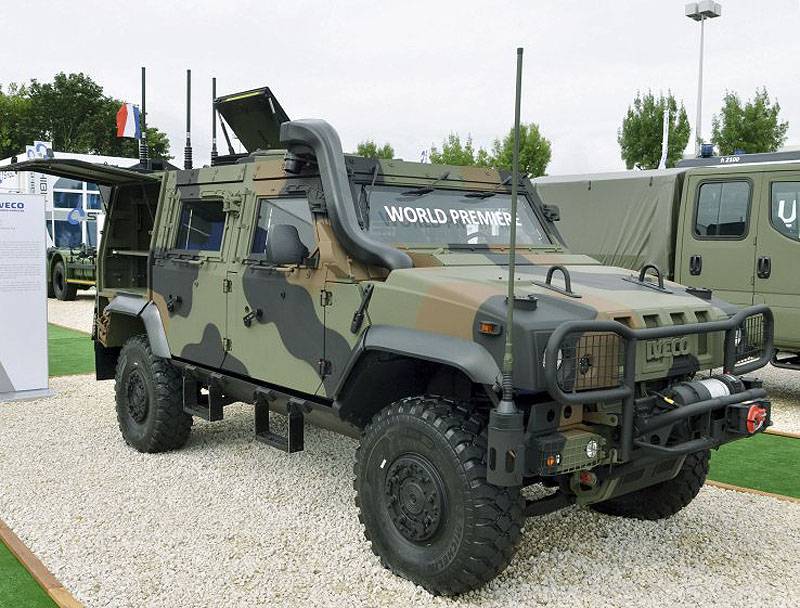
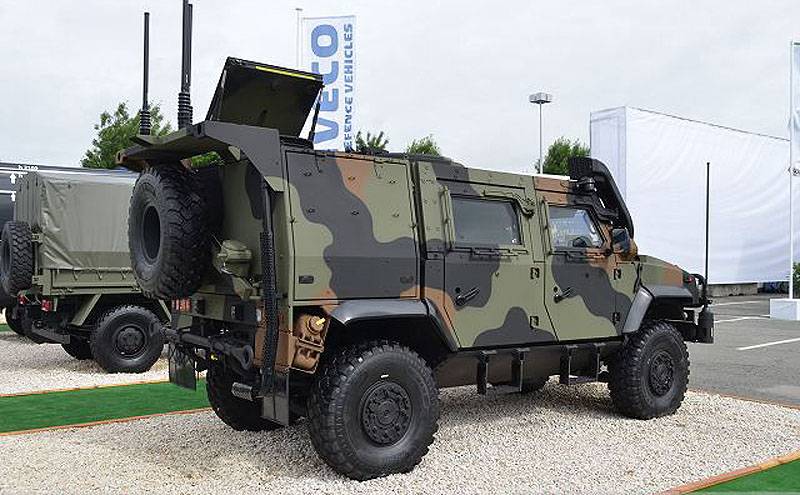
RTD Sherpa Light. If the part of the Scorpion program for Trafficule Blinde MultiRole universal armored vehicle is completely French, then this car is definitely one of the candidates
Armored car Lince Italian army in Afghanistan. Many countries have adopted an Iveco DV armored car LMV; Brazil was the last to choose it in April 2016.
The amount of information that is transmitted via the CAN standard bus has increased significantly, and this made it possible to create a fully digital cockpit with an advanced man-machine interface. A Logbox system was installed that works not only as an interface for communication and situational awareness of systems, but also as a logistic tool and event recorder. Particular attention was paid to the reduction of electromagnetic noise in order to improve the quality of communication; in the high-frequency range, for example, noise was reduced by 45 dB due to sealing and filtering various electronic control modules. Power generation is provided by a generator on the 250 Amp, and there are three batteries on board. Two AGM batteries (Absorptive Glass Mat, electrolyte absorbed in glass fiber matter) under the hood are designed to start the engine and power the car's subsystems, and a lithium-ion battery is installed in the cab (army requirement for a protected backup power source).
As for the electronic kit, in the Italian army, VTLM2 machines used as communication nodes of the T2, T3 and T4 levels (branch, platoon and company) will be equipped with four-channel programmable radio stations SWave VQ1 from Finmeccanica-Leonardo, which will also supply most of the equipment. Each of the four channels in the VHF band has an 50 W amplifier. The radio station is located between the two front seats; in addition, a space has been prepared in the trunk of the car for installing an 125 W amplifier for the HF range. In order to maintain the same level of communication of all other digital platforms, a new generation radio station was chosen; it alone replaces the four existing radio stations (SINCGARS, HCDR, SBW VM3, HF Turma). The new radio station VQ1 will take the place of the old SINCGARS 634, saving space, mass and energy consumption. All vehicles also have Harris AN / PRC-152 Tacsat and Immarsat BGAN satellite communication systems, while T4 communication nodes will be equipped with a SOTM / X phased-array satellite antenna mounted on the roof. T3 sites will be prepared for quick installation of this antenna if necessary. Commutation is provided by three components: the Sentinel MSR165 multiservice switch-router, the UCR radio station configuration unit and the UIS-379D digital intercom system. It’s worth saying that Finmecanica is working on the MSR165 Evolution model, in which UCR, TSB applications and encryption will also be integrated in the same package. Management software, communications, navigation, tracking of their forces and situational awareness work on the computer Larimart350 IIL, the GPS system is supplemented with inertial navigation system GMA Axitude based on microelectromechanical systems. The Guardian H3 silencer provides protection from radio-controlled IEDs. One meter wave antenna is installed in front on the left, a broadband network antenna along with a decimeter wave antenna on the right. The remaining antennas are mounted on the rear of the trunk.
As for the reconnaissance variant, due to the presence of the Janus multitouch panoramic station installed on the telescopic mast, located at the rear right, the entire antenna set was moved in view of its visibility. This option also installs a new VQ1 programmable radio station and a Guardian H3 silencer.
GDELS Eagle V is the latest version of the well-known Eagle armored car, which is used in many countries, including Germany
Currently, three prototypes of the VTLM2 are being tested, and a pre-nuclear machine with a set of radio equipment (minus classified antennas) was shown at Eurosatory. All ballistic tests have already been conducted, and explosive tests are scheduled for the end of the 2016-beginning of the 2017 of the year. Iveco DV expects the first contract for mass production under the Forza NEC program at the end of 2016, which provides for the production of about 20 machines and the corresponding logistical support.
Meanwhile, Iveco DV has added another flag to its LMV car operator map. In April, the 2016 of the year, the Brazilian army chose this vehicle and signed a contract for the 32 units.
While the Spanish army is testing the latest version of the reconnaissance VAMTAC ST5, another prototype based on the VAMTAC S3 was delivered some time ago. The armored car, designated VERT (Vehiculo de Reconocimiento Terrestre - ground reconnaissance vehicle), is equipped with a telescopic mast with a Navantia SERT sensor kit mounted on it. At the end of 2015, UROVESA received two contracts from the Spanish Ministry of Defense for 4x4 vehicles weighing 1,5 tons. For the army, fleet and a quick reaction force over five years, about 772 armored vehicles should be purchased. Denmark, the operator of the GDELS Eagle IV armored car, is currently in search of a new 4x4 vehicle for patrol, electronic warfare, logistics and reconnaissance missions. The armored car must have a mine protection level 4a / 4b, bulletproof protection level 3, as well as transported in a cargo plane C-130.
After the success of its Cobra armored car, the Turkish company Otokar now offers the next version of the Cobra 2 to potential buyers.
Series of articles completed
Materials used:
www.nexter-group.fr
www.kmweg.com
www.iveco-otomelara.com
www.rheinmetall.com
www.patria.fi
www.fnss.com.tr
www.stengg.com
www.milindcom.ru
www.lockheedmartin.com
www.hsw.pl
www.otokar.com.tr
www.uvz.ru
www.kmz.ru
www.gdls.com
www.baesystems.com
www.saabgroup.com
www.wikipedia.org
en.wikipedia.org
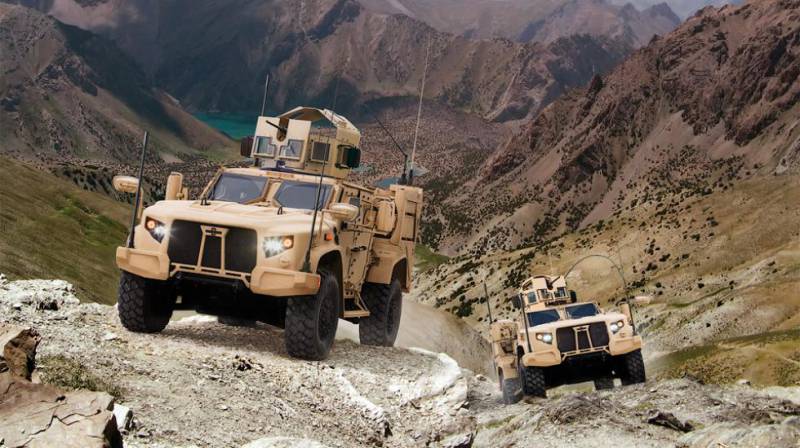
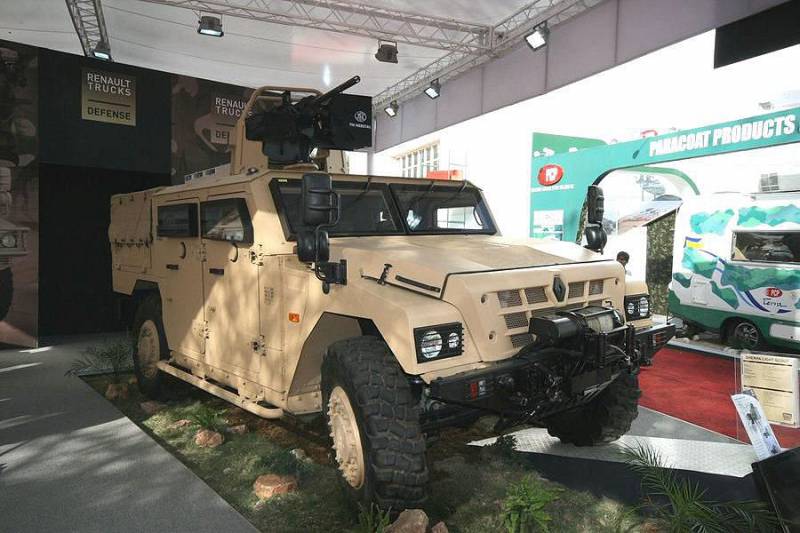
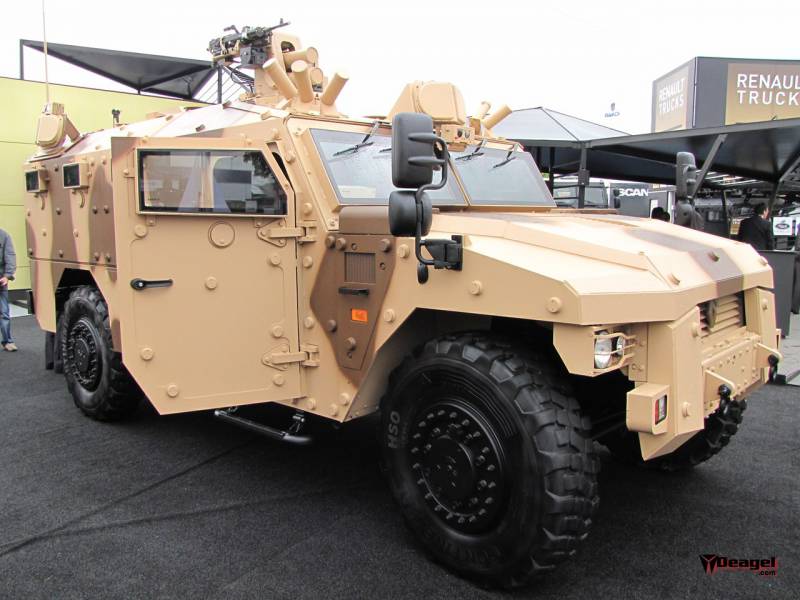
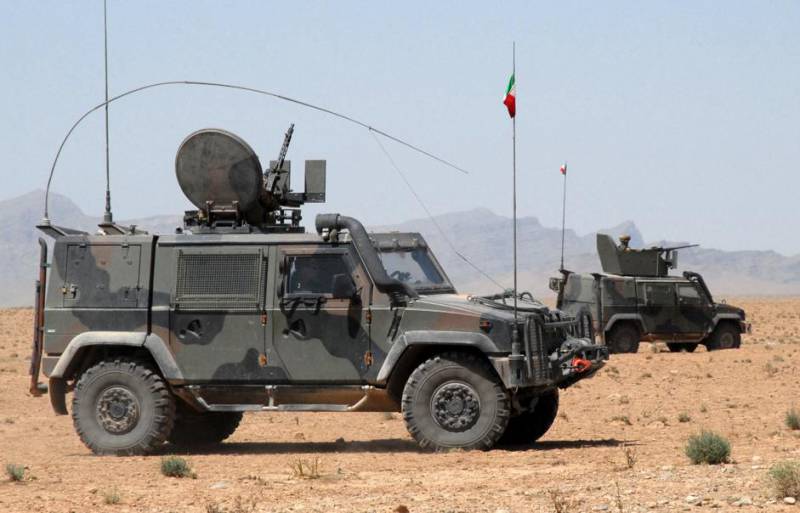
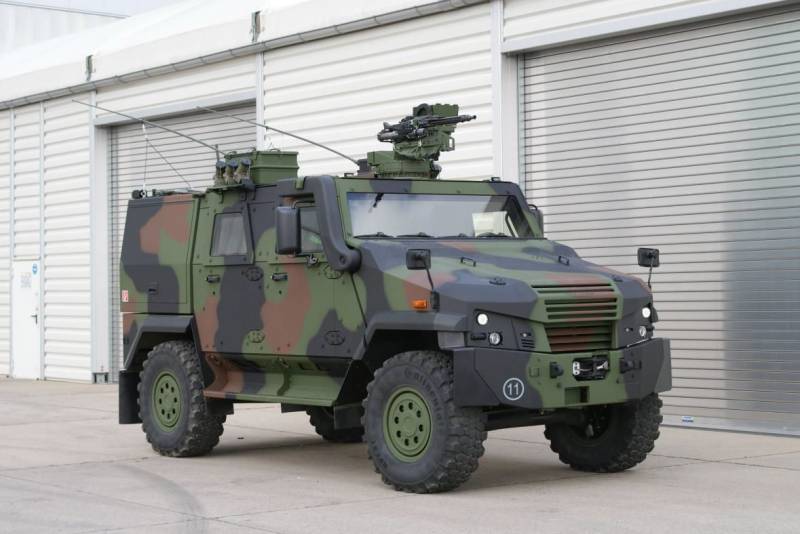
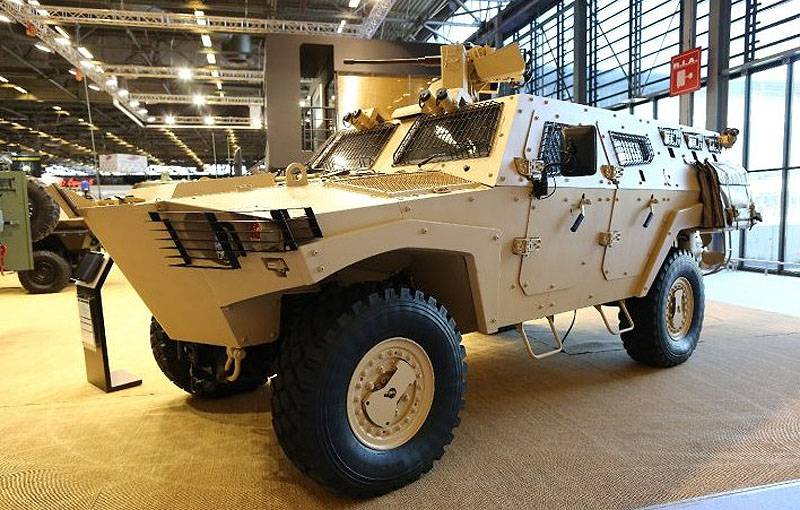
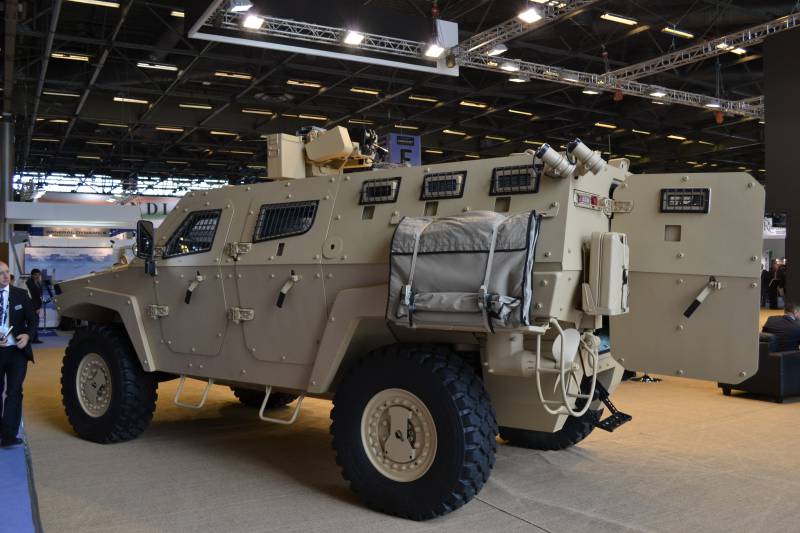
Information